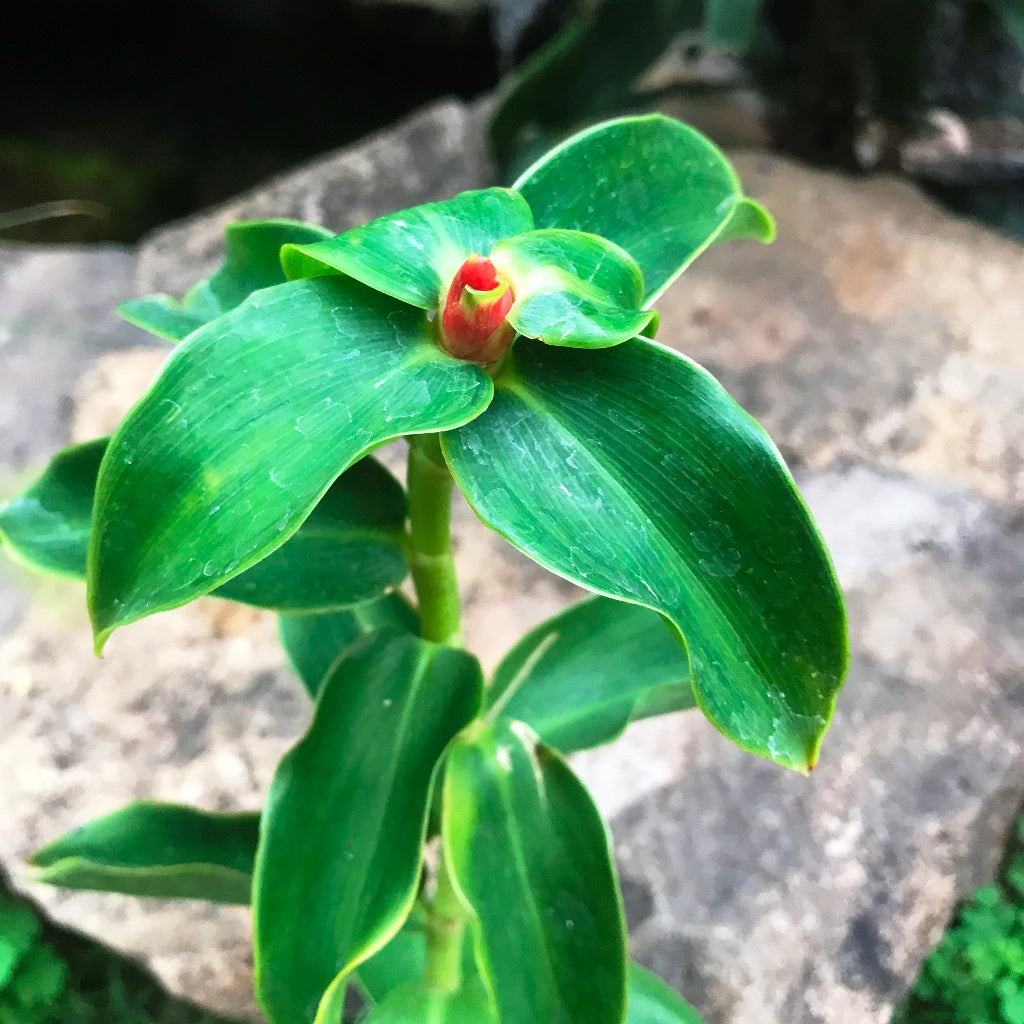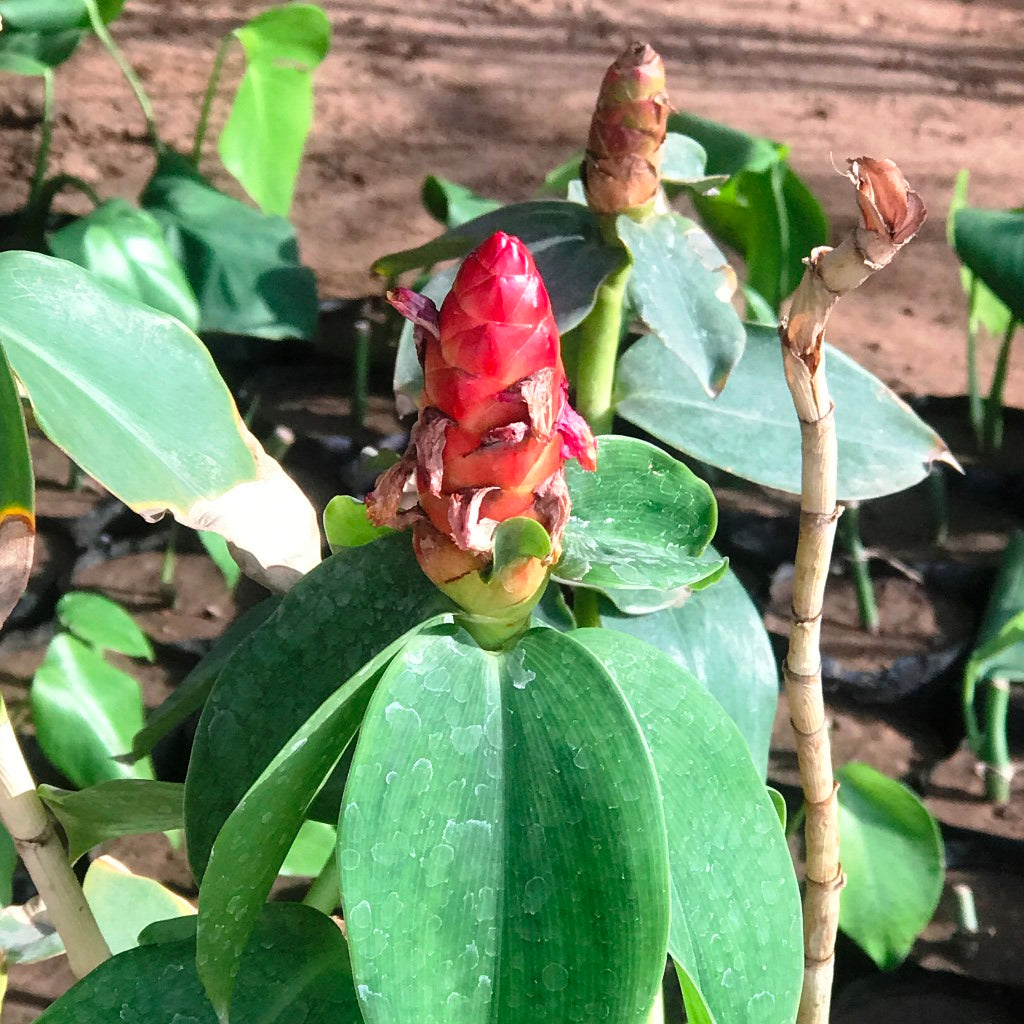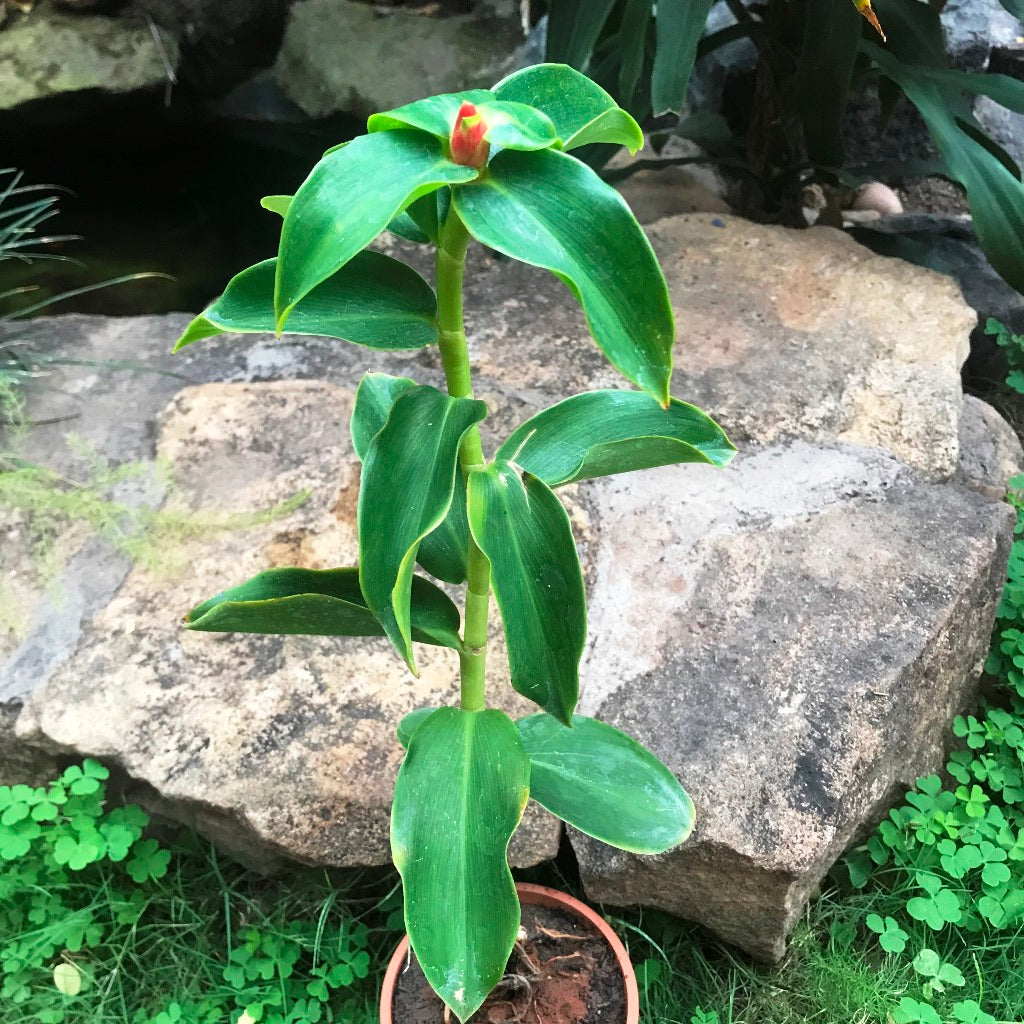Fiery Costus
Family
Costaceae
Origin
South America
Description
Insulin plant (Chamaecostus cuspidatus) is a perennial, herbaceous plant. It is an upright, spreading plant growing up to a height of 2 to 5 feet, with the tallest stems falling and lying on the ground.
The leaves are simple, alternate, entire, oblong, 4-8 inches long with parallel venation, spirally arranged around the stems. Large, fleshy, smooth, and dark green leaves have a light purple underside.
The blooms are orange in color and are 1.5 inches in diameter. The flowers have a sparkly sheen, dentate edges, and have the appearance of being made out of crepe paper.They bloom during the time of May to June (warm months) and they appear to be cone-like heads at the tips of branches.
The leaf of the plant helps in producing insulin. It control the blood sugar levels in the body. Insulin plant is a remarkable Ayurvedic medicine used to treat diabetes in a natural way.
Environment
It grows best in shaded or semi-shaded areas, A sunny windowsill will be an ideal position for these plants.
It grows well in well-drained soil with a pH in the range of 6.5 – 7.5, tolerating 5.5 – 8. Add coconut coir and Pine bark to make the soil more drainage friendly.
Water Insulin plant regularly during the growing season and always keep the soil evenly moist but not soggy. Allow the topsoil to become slightly dry between each watering. During the winter months, reduce watering.
Use an all purpose fertilizer. Do not fertilize Insulin plant during the Winter
It will flower more prolifically in a sunny spot but in such a position the leaves tend to become rather yellow and they wilt in hot weather
Landscape Uses
Insulin plant is used for Herbal garden, ornamental landscaping and as avenue plant























